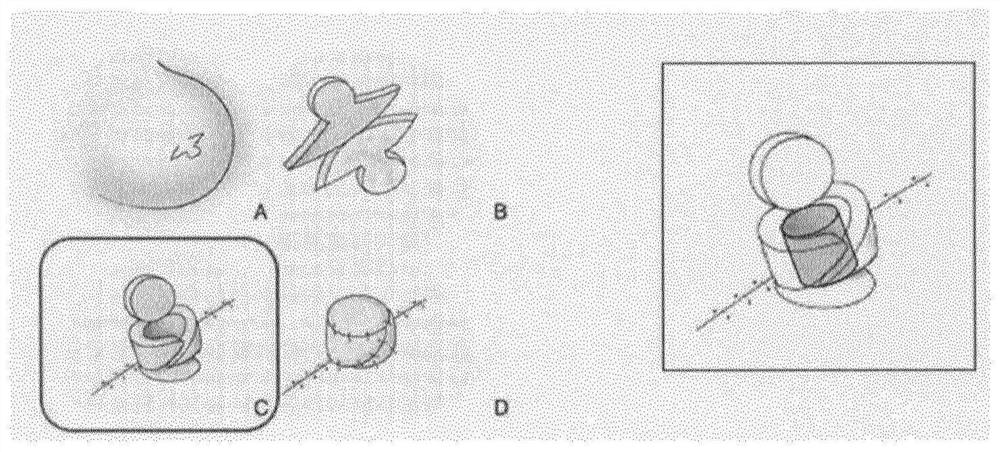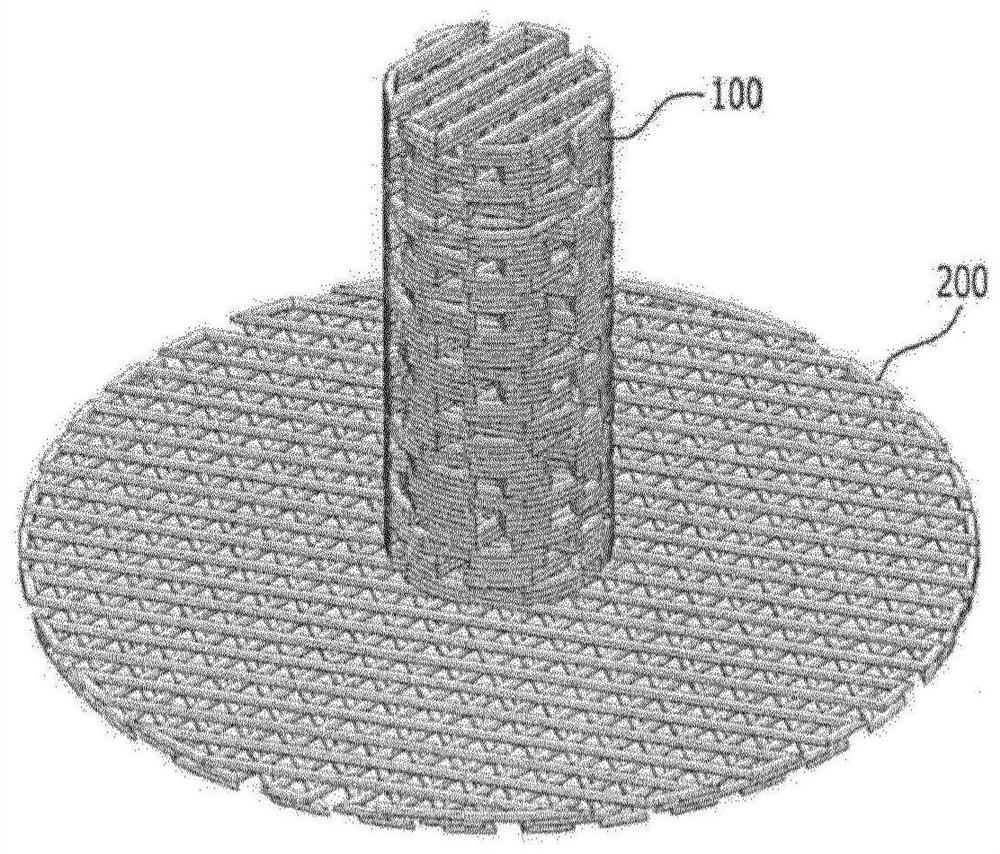Implant for reconstruction of nipple-areola complex, and method for producing same
A technology of implants and composites, which is applied in the directions of processing and manufacturing, manufacturing tools, and additive manufacturing, etc., can solve problems such as limitations, lower aesthetic and psychological satisfaction of patients, and lower height of surgical nipples, and achieve a high implantation rate.
- Summary
- Abstract
- Description
- Claims
- Application Information
AI Technical Summary
Problems solved by technology
Method used
Image
Examples
Embodiment 1
[0073] Implant samples (10mm×40mm×0.8mm) were prepared using 3D printing. Specifically, polycaprolactone (PCL) was extruded through a 3D printer head, and microfibers with a diameter of 500 μm were stacked at intervals of 500 μm to prepare implanted samples with a porosity of 50%.
Embodiment 2
[0075] Fabrication of implants for nipple-areolar complex reconstruction using 3D printing. Specifically, polycaprolactone (PCL) was extruded through a 3D printer head, and microfibers with a diameter of 500 μm were laminated into a disc shape to form a support. The same steps are then carried out to form a cylindrical body at the upper end of the support. As a result, implants for reconstruction of the nipple-areolar complex were manufactured. In order to obtain an implant for nipple-areolar complex reconstruction with a porosity of 50%, the interval between microfibers was set at 500 μm. 3D printing was performed under the condition that the diameter of the main body was set to 10 mm and the height thereof was set to 5 mm. Image 6 The implant for reconstructing the nipple-areolar complex thus manufactured is shown.
experiment example 1
[0076] [Experimental Example 1: Evaluation of Ease of Tissue Penetration]
[0077] The implanted samples prepared according to Example 1 were implanted into the subcutaneous tissue of rabbits, and the degree of biological tissue penetration into the implanted samples was evaluated over 12 months. The results are shown in Figure 7 middle.
[0078] Figure 7 The results showed that biological tissue penetrated between the voids of the implanted samples and that the volume of the implanted samples was maintained even after 12 months after implantation.
PUM
| Property | Measurement | Unit |
|---|---|---|
| diameter | aaaaa | aaaaa |
| diameter | aaaaa | aaaaa |
| diameter | aaaaa | aaaaa |
Abstract
Description
Claims
Application Information
 Login to View More
Login to View More - R&D Engineer
- R&D Manager
- IP Professional
- Industry Leading Data Capabilities
- Powerful AI technology
- Patent DNA Extraction
Browse by: Latest US Patents, China's latest patents, Technical Efficacy Thesaurus, Application Domain, Technology Topic, Popular Technical Reports.
© 2024 PatSnap. All rights reserved.Legal|Privacy policy|Modern Slavery Act Transparency Statement|Sitemap|About US| Contact US: help@patsnap.com










